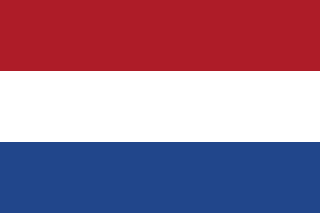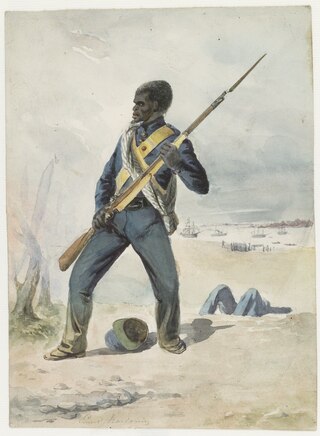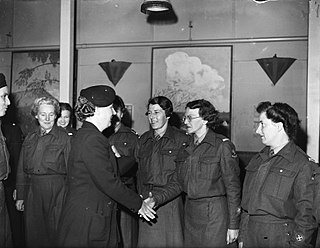
Hubertus Johannes "Huib" van Mook was a Dutch administrator in the East Indies. During the Indonesian National Revolution, he served as the lieutenant governor-general of the Dutch East Indies from 1942 to 1948. Van Mook also had a son named Cornelius van Mook who studied marine engineering at the Massachusetts Institute of Technology. He also wrote about Java - and his work on Kota Gede is a good example of a colonial bureaucrat capable of examining and writing about local folklore.

Hein ter Poorten was a Dutch military officer. He was the commander of the Royal Netherlands East Indies Army in World War II. Ter Poorten was also Allied land forces commander in the American-British-Dutch-Australian Command on Java during early 1942.

The Royal Netherlands East Indies Army was the military force maintained by the Kingdom of the Netherlands in its colony of the Dutch East Indies, in areas that are now part of Indonesia. The KNIL's air arm was the Royal Netherlands East Indies Army Air Force. Elements of the Royal Netherlands Navy and Government Navy were also stationed in the Netherlands East Indies.
The Battle of Ambon occurred on Ambon Island in the Dutch East Indies, as part of the Japanese offensive on the Dutch colony during World War II. In the face of a combined defense by Dutch and Australian troops, Japanese forces conquered the island and its strategic airfield in several days. In the aftermath of the fighting, a major massacre of many Dutch and Australian prisoners of war by the Imperial Japanese Army (IJA) followed. Following the war, many of the IJA personnel were tried for war crimes.
The Military ranks of the Netherlands Armed Forces are the military insignia used by the Netherlands Armed Forces.

Korps Speciale Troepen was a Royal Netherlands East Indies Army (KNIL) special forces unit that was established for deployment against the Indonesian revolutionaries during the Indonesian National Revolution. It was formed in 1948 with the Depot Speciale Troepen at its core and disbanded alongside the Royal Netherlands East Indies Army in 1950, by which time it had been renamed to the Regiment Speciale Troepen. The DST consisted of about 570 men at its establishment in 1945 and had a precursor in the Korps Insulinde that conducted clandestine operations during the Japanese occupation of the Dutch East Indies. In June 1949, 250 men of the 1st Parachute Company were integrated into the Corps. The KST, which would reach a maximum strength of 1250 men, was composed of Dutch war volunteers (OVWs), Eurasians and native soldiers, including Moluccans. The present day Korps Commandotroepen of the Royal Netherlands Army is considered a continuation of the RST.

The Royal Netherlands East Indies Army Air Force was the air arm of the Royal Netherlands East Indies Army in the Dutch East Indies from 1939 until 1950. It was an entirely separate organisation from the Royal Netherlands Air Force.

General Simon Hendrik Spoor was the Chief of Staff of the Royal Netherlands East Indies Army and the Royal Dutch Army in the Dutch East Indies, from 1946 to 1949, during the Indonesian National Revolution.

The Dutch East Indies, also known as the Netherlands East Indies, was a Dutch colony with territory mostly comprising the modern state of Indonesia, which declared independence on 17 August 1945. Following the Indonesian War of Independence, Indonesia and the Netherlands made peace in 1949. In the Anglo-Dutch Treaty of 1824, the Dutch ceded the governorate of Dutch Malacca to Britain, leading to its eventual incorporation into Malacca (state) of modern Malaysia.

Belanda Hitam was an Indonesian language term used to refer to Black soldiers recruited by the Dutch colonial empire for service in the Royal Netherlands East Indies Army (KNIL), the colonial army of the Dutch East Indies. The recruitment of Black soldiers into the KNIL resulted from a combination of factors, including the heavy losses suffered by Dutch forces in the Java War and concerns over the reliability of indigenous KNIL troops. Between 1831 and 1872, over 3,000 West Africans, mostly Akan people, were recruited from the Dutch Gold Coast for KNIL service in the East Indies.
Jhr. Johan Cornelis van der Wijck was a Dutch lieutenant general of the Royal Netherlands East Indies Army (KNIL) and governor of Aceh and related territories.

The Netherlands Indies Civil Administration was a semi-military organisation, established in April 1944, tasked with the restoration of civil administration and law of Dutch colonial rule after the capitulation of the Japanese occupational forces in the Dutch East Indies at the end of World War II.

The Korps Commandotroepen (KCT) is the elite special forces unit of the Royal Netherlands Army. The KCT traces its origins to the Second World War with the founding of No. 2 (Dutch) Troop, and the founding of the Korps Speciale Troepen during the Indonesian War of Independence. At present, the unit is tasked with conducting the full spectrum of special operations, its principal tasks being direct action, special reconnaissance, military assistance and counter-terrorism.

The Colonial Reserve Corps was an arm of the Royal Netherlands East Indies Army and an important recruitment depot. The Corps existed from 1890 to 1951 and was located in the Prins Hendrikbarracks in Nijmegen.

The 1st Infantry Battalion of the Royal Netherlands East Indies Army was a Dutch colonial military unit that was active in the Dutch East Indies during World War II and the Indonesian National Revolution.
The Van Mook–MacArthur Civil Affairs Agreement was an agreement between the United States and the Dutch government-in-exile. It concerned the jurisdiction over and administration of civil affairs in Dutch East Indies territory liberated by an Allied expeditionary force during WWII.

In order to contain the violence in the Dutch East Indies after the Japanese capitulation in 1945 and to restore colonial order, the Netherlands sent battalions of Oorlogsvrijwilligers to the colony. They were recruited in 1944 and 1945, mostly in the southern provinces of the Netherlands, and initially intended for deployment in Europe. Others had signed up for the fight against Japan in the summer of 1945.

The Overvalwagen was an armored car or armored personnel carrier that saw service with the Royal Dutch East Indies Army and its auxiliary forces. It was used during the Second World War's Dutch East Indies Campaign.
Elisabeth Pieternella Maria "Bep" Stenger was a Dutch aid worker with the Red Cross in Surabaya, the Dutch East Indies. During World War II, she became involved in the resistance against the Japanese when her father, an officer of the Royal Netherlands East Indies Army (KNIL), became a prisoner of war following the Dutch East Indies campaign.

The Royal Netherlands Army (Volunteer) Women's Auxiliary Corps was the women's branch of the Royal Army of the Netherlands Armed Forces from 1943 to 1952. The VHK was the predecessor of the Royal Netherlands Army Women's Department, which existed from 1951 to 1982.















